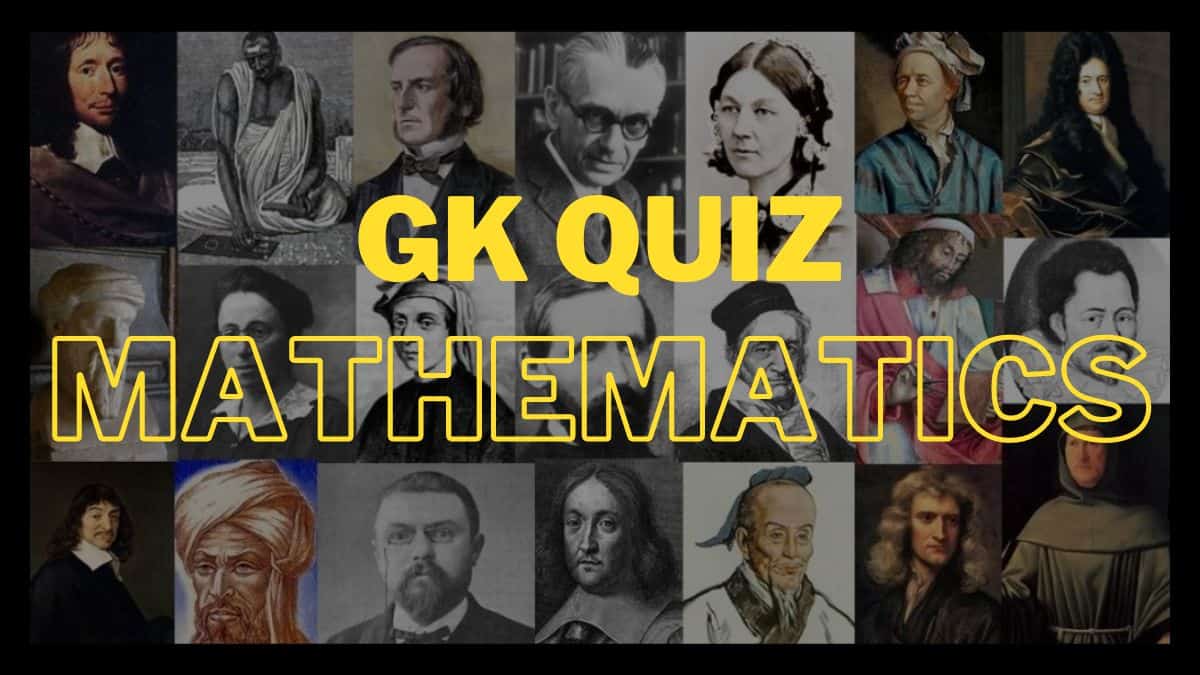December 22 is observed annually to mark the birth anniversary of the legendary Indian mathematician Srinivasa Ramanujan. As the day recognizes and celebrates his works we have made a quiz for you to find out how much you know about the history of mathematics.
Take this quiz and test your knowledge of mathematicians around the world!
P1. Who is believed to be the first mathematician?
a) Archimedes
b) Thales of Miletus
c) Leonardo DaVinci
d) David Copperfield
Answer: Thales of Miletus
EXPLANATION:
The Greek mathematician, astronomer, statesman and pre-Socratic philosopher.
Thales of Miletus in Ionia, Asia Minor. One of the seven wise men of Greece. Aristotle considered him the first Greek philosopher and is often known as the father of science.
P2. Who defined zero?
a) Brad Pitt
b) Archimedes
c) Brahmagupta
d) John von Neumann
Answer: Brahmagupta
EXPLANATION: Brahmagupta was an Indian mathematician who defined zero.
P3. Who discovered the right triangle?
a) Pythagoras
b) Ancient Egyptians
c) Miley Cyrus
d) Michelangelo
Answer: Pythagoras
EXPLANATION: Pythagoras was a philosopher and numerous mathematical and scientific findings were attributed to him, constituting the Pythagorean theorem.
Q4. Who is considered the “father of mathematics”?
a) Carl Friedrich Gauss
b) Isaac Newton
c) Evariste Galois
d) Archimedes
Answer: Archimedes
EXPLANATION: The Greek mathematician, physicist, engineer, astronomer and inventor from the ancient city of Syracuse in Sicily, Archimedes of Syracuse, was a prominent scientist in classical antiquity. He was considered the greatest mathematician in ancient history and one of the greatest of all time.
Q5. Who invented numbers?
a) Brahmagupta
b) Archimedes
c) Euclid
d) Fibonacci
Answer: Brahmagupta
EXPLANATION:
The Arabic numeral system is usually attributed to two ancient Indian mathematicians called Brahmagupta from the 6th century BC and Aryabhata from the 5th century BC.
Q6. Who invented coordinate geometry?
a) Nicole Oresme
b)Euler
c) Galileo
d) Copernicus
Answer: Rene Descartes
EXPLANATION:
The coordinate system we commonly use is called the Cartesian system, after the French mathematician René Descartes (1596-1650), who developed it in the 17th century.
Q7. What were some of Leonardo DaVinci’s interests (should apply to both)?
a) Botany, Cartography
b) Art, Cars
c) Cooking, Archery
d) Engineering, Theater
Answer: Botany, Cartography
EXPLANATION: Leonardo di ser Piero da Vinci, born April 15, 1452, was an Italian scholar of the High Renaissance who was also an active painter, draftsman, engineer, scientist, theorist, sculptor and architect.
Q8. Who is the only woman in history to win the Fields Medal?
a) Ada Lovelace
b) Julia Robinson
c) Maryam Mirzakhani
d) Marjorie Lee Browne
Answer: Maryam Mirzakhani
EXPLANATION: Iranian mathematician and mathematics professor at Stanford University, Maryam Mirzakhani, was a researcher on topics such as Teichmüller theory, hyperbolic geometry, ergodic theory and symplectic geometry.
Q9. How many zeros are there in 1 septuagintillion?
a) 635
b) 213
c) 452
d) 157
Answer: 213
EXPLANATION: Septuagintillion is used in the short scale for 10213 and in the long scale for 10420.
Q10. Who developed probability theory?
EXPLANATION: Human activities involving quantitative analysis of probability theory data are used as a mathematical basis for statistics.
Q11. What are the first ten digits of Pi?
The number π written as ‘pi’ is a mathematical constant that is the ratio between the circumference of a circle and its diameter, approximately equal to 3.14159. The number π appears in many mathematics and physics formulas.
Categories: Optical Illusion
Source: ptivs2.edu.vn
